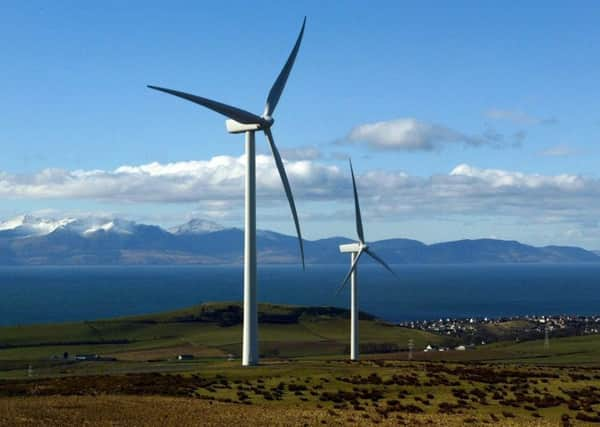Five ways to cut carbon along with power bills


Recent policy shifts at Westminster, however, have left the future growth of the sector in question. As we approach the Chancellor’s Autumn Statement on November 23 Scottish Renewables has developed a five-point action plan to get our industry investing again
For offshore wind, the key point is the launch of the auction round announced back in March’s (2016) Budget.
Advertisement
Hide AdAdvertisement
Hide AdThe Contracts for Difference scheme created competitive auctions through which energy projects like offshore wind farms, large hydro schemes and nuclear power stations bid for contracts with the UK Government.
While the results of the first auction were announced in February 2015, a second – originally scheduled to complete by February this year – is yet to go ahead, leaving projects which could contribute to the UK’s economy at a standstill.
Onshore wind and solar are the two cheapest forms of renewables that can be deployed today – and are on track to be the cheapest forms of electricity in the next decade. Together they can make a huge contribution to the Government’s ambitions to tackle climate change at lowest cost to consumers. But both are locked out from bidding for Contracts for Difference.
That must change if we are to deliver climate targets while keeping consumer bills down.
Thirdly, Scottish Renewables would like the Government to address the financial challenge of developing renewables projects in the part of our country with the greatest wind, wave and tide resource: the Scottish islands
Increased renewable energy deployment on Orkney, Shetland and Western Isles could provide benefits up to £725 million for local economies and deliver renewable power to the rest of the UK at a competitive cost to the consumer.
It would also trigger significant investment in new grid connections which would further boost capital investment in the UK’s energy infrastructure. To develop that resource, the renewables industry would like to see specific inclusion of our remote islands in the next Contracts for Difference allocation round, as well as more directed support for the emerging wave and tidal sector.
As marine energy moves to commercial-scale deployment it is important that developers see a viable route to market for their technology and that the technology is not expected to compete directly with others before it is ready.
Advertisement
Hide AdAdvertisement
Hide AdOur fourth proposal is for a clear, comprehensive plan to decarbonise heat and support smaller-scale renewables. The Feed-in Tariff, which supports techn like rooftop solar and small wind turbines, is to end soon – after helping incentivise almost 890,000 solar PV installations and initiating a renaissance in hydro in Scotland.
The future of the Renewable Heat Incentive, which has delivered around 67,000 renewable heat installations in its five-year existence, hangs in the balance as industry waits for the results of a UK Government review.
In Scotland, we have a target of delivering 11 per cent of our heat from renewable sources by 2020. That figure currently stands at 5.3 per cent, so meeting that goal is likely to need a significant additional uptake of technologies like heat pumps, biomass boilers, combined heat and power plants and solar thermal panels.
Finally, Scottish Renewables would like the Chancellor’s Autumn Statement to look to the future. The Carbon Trust has estimated that increased energy storage in the UK electricity system could deliver savings of up to £2.4bn a year by 2030, or £50 a year on the average consumer energy bill.
That investment, however, requires changes to existing regulatory structures and commercial practices to recognise the value of the services that storage like batteries and hydro-pumped storage can provide to the grid.
These five actionscould hold significant benefits for the UK’s renewable and low-carbon economy.
Niall Stuart, Chief Executive, Scottish Renewables